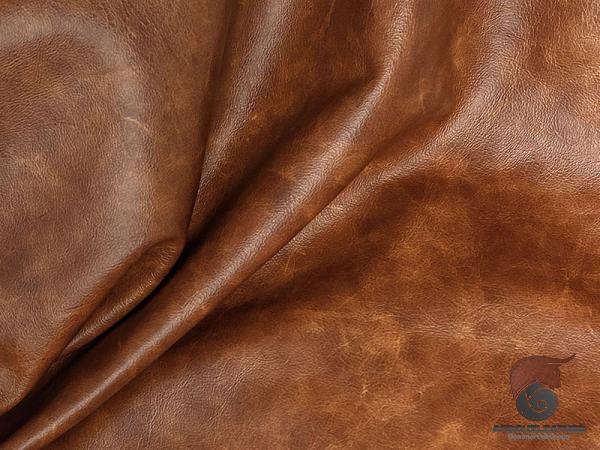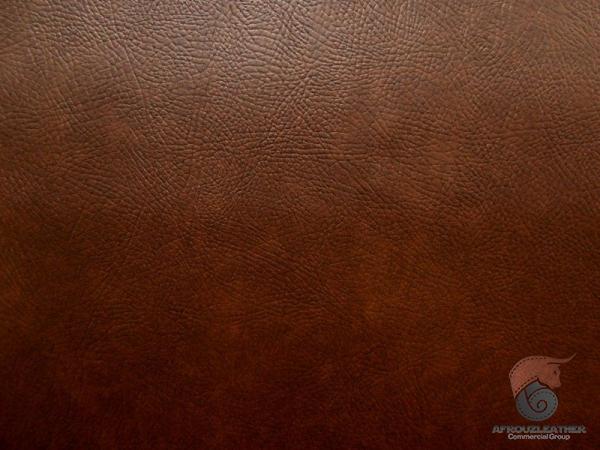Synthetic leather, also known as faux leather or artificial leather, has gained significant popularity in recent years as a versatile alternative to traditional leather. This article takes a closer look at synthetic leather, exploring its composition, manufacturing process, applications, advantages, and potential challenges. With the growing demand for sustainable and cruelty-free options, synthetic leather has emerged as a compelling choice for consumers and businesses alike. Composition: Synthetic leather is typically composed of a combination of polymers, typically polyurethane (PU) or polyvinyl chloride (PVC). These materials are layered onto a fabric base, which can be made from polyester, cotton, or nylon.
leather
 The top layer of synthetic leather is designed to mimic the appearance and texture of genuine leather, using various techniques such as embossing and printing. Manufacturing Process: The process of creating synthetic leather involves several stages. First, the base fabric is treated with various chemicals to ensure strength and durability. Next, a coating of polymer material, such as PU or PVC, is applied to the fabric using the lamination or coating method. This coating is then worked upon and treated to achieve the desired texture, appearance, and feel. The final product is then ready to be used in various applications. Applications: Synthetic leather finds applications across a wide range of industries and products. The fashion industry, for instance, utilizes synthetic leather in the production of garments, shoes, handbags, belts, and accessories. The furniture industry also uses synthetic leather extensively for upholstery, ensuring a cost-effective and easy-to-maintain alternative to real leather. In the automotive sector, synthetic leather is increasingly used for car interiors, providing a more sustainable and animal-friendly option.
The top layer of synthetic leather is designed to mimic the appearance and texture of genuine leather, using various techniques such as embossing and printing. Manufacturing Process: The process of creating synthetic leather involves several stages. First, the base fabric is treated with various chemicals to ensure strength and durability. Next, a coating of polymer material, such as PU or PVC, is applied to the fabric using the lamination or coating method. This coating is then worked upon and treated to achieve the desired texture, appearance, and feel. The final product is then ready to be used in various applications. Applications: Synthetic leather finds applications across a wide range of industries and products. The fashion industry, for instance, utilizes synthetic leather in the production of garments, shoes, handbags, belts, and accessories. The furniture industry also uses synthetic leather extensively for upholstery, ensuring a cost-effective and easy-to-maintain alternative to real leather. In the automotive sector, synthetic leather is increasingly used for car interiors, providing a more sustainable and animal-friendly option.
Specifications of leather
 Furthermore, synthetic leather is also used in the production of sports equipment, such as footballs and basketballs, offering durability and waterproof attributes. Advantages of Synthetic Leather: 1. Cost-efficiency: One of the primary advantages of synthetic leather is its lower cost compared to genuine leather. Synthetic leather provides a more affordable option for consumers while still offering a similar look and feel. 2. Animal-friendly: Synthetic leather is a cruelty-free alternative to genuine leather as it does not require the use of animal hides. This aspect has made it highly appealing to consumers who are concerned about animal welfare and sustainability. 3. Durability and Easy Maintenance: Synthetic leather is designed to be highly durable and resistant to wear and tear. It is also typically easier to clean and maintain compared to genuine leather, as it does not require special care or conditioning. 4. Consistent Quality: Synthetic leather is produced under controlled conditions, ensuring consistent quality and eliminating natural variations often found in genuine leather. 5. Enhanced Customization: The manufacturing process of synthetic leather allows for greater design flexibility, making it easier to create a variety of textures, patterns, and colors to suit different tastes and preferences.
Furthermore, synthetic leather is also used in the production of sports equipment, such as footballs and basketballs, offering durability and waterproof attributes. Advantages of Synthetic Leather: 1. Cost-efficiency: One of the primary advantages of synthetic leather is its lower cost compared to genuine leather. Synthetic leather provides a more affordable option for consumers while still offering a similar look and feel. 2. Animal-friendly: Synthetic leather is a cruelty-free alternative to genuine leather as it does not require the use of animal hides. This aspect has made it highly appealing to consumers who are concerned about animal welfare and sustainability. 3. Durability and Easy Maintenance: Synthetic leather is designed to be highly durable and resistant to wear and tear. It is also typically easier to clean and maintain compared to genuine leather, as it does not require special care or conditioning. 4. Consistent Quality: Synthetic leather is produced under controlled conditions, ensuring consistent quality and eliminating natural variations often found in genuine leather. 5. Enhanced Customization: The manufacturing process of synthetic leather allows for greater design flexibility, making it easier to create a variety of textures, patterns, and colors to suit different tastes and preferences.
buy leather
 Challenges and Considerations: 1. Environmental Impact: While synthetic leather may be cruelty-free, the production process often involves the use of chemicals and petroleum-based materials, which can have environmental implications. However, efforts are underway to develop more sustainable and eco-friendly alternatives to traditional synthetic leather. 2. Breathability: Compared to genuine leather, synthetic leather is less breathable. This can result in reduced comfort, particularly in items such as shoes or upholstery in hot and humid climates. 3. Perception: Despite its advancements, synthetic leather may still be perceived by some as an inferior substitute for genuine leather. However, as technologies continue to improve and consumers become more conscious about sustainability, this perception is gradually shifting. Conclusion: As consumers become more environmentally and ethically conscious, synthetic leather has emerged as a compelling alternative to genuine leather. With its lower cost, durability, customization options, and animal-friendly attributes, synthetic leather has found its place in various industries, including fashion, furniture, and automotive. However, it is important to consider the potential environmental impact of synthetic leather production and continue supporting efforts to develop more sustainable and eco-friendly options. As technology advances and consumer preferences evolve, synthetic leather is likely to continue playing a significant role in the future of the leather industry.
Challenges and Considerations: 1. Environmental Impact: While synthetic leather may be cruelty-free, the production process often involves the use of chemicals and petroleum-based materials, which can have environmental implications. However, efforts are underway to develop more sustainable and eco-friendly alternatives to traditional synthetic leather. 2. Breathability: Compared to genuine leather, synthetic leather is less breathable. This can result in reduced comfort, particularly in items such as shoes or upholstery in hot and humid climates. 3. Perception: Despite its advancements, synthetic leather may still be perceived by some as an inferior substitute for genuine leather. However, as technologies continue to improve and consumers become more conscious about sustainability, this perception is gradually shifting. Conclusion: As consumers become more environmentally and ethically conscious, synthetic leather has emerged as a compelling alternative to genuine leather. With its lower cost, durability, customization options, and animal-friendly attributes, synthetic leather has found its place in various industries, including fashion, furniture, and automotive. However, it is important to consider the potential environmental impact of synthetic leather production and continue supporting efforts to develop more sustainable and eco-friendly options. As technology advances and consumer preferences evolve, synthetic leather is likely to continue playing a significant role in the future of the leather industry.

Your comment submitted.